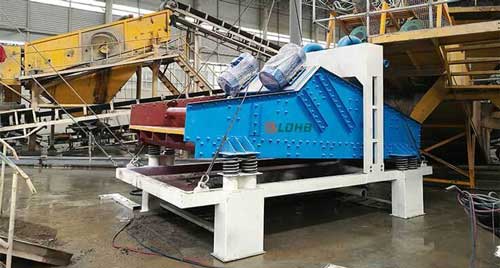- Home
- Products
- Solutions
- Resource Library
- About Us
- + 86-18736301510
For different sand washing equipments, water consumption is very different. In the actual sand washing operation, the proportion of sand and water of spiral sand washing machine is about 1:1 or 1:1.5, while that of wheel bucket sand washer is about 2:1 or 4:3. It can be seen that the wheel bucket sand washer is water-saving and the screw sand washer is water-consuming. Of course, this is not fixed, just as a data reference. The specific water consumption shall be determined according to the grain size, mud content, powder content and other factors of the sand. The spiral sand washing equipment is to melt the soil on the sand into the water. With the rotation of other materials through the spiral parts, the mud water makes the sand continuously agitate, and the impurities flow out from the upper overflow port with the water. The sand is continuously rotated and discharged from the outlet at the other end. But no matter what kind of sand washer, it can’t guarantee the purity and dryness of sand. So how to solve the problem of the sand washed by spiral sand washer with water? LDHB engineers recommend you to take the following methods.
At the back of the spiral sand washing machine, the sand washing wastewater can be directly discharged to the sieve plate of the dehydration screen to recover the lost sand. It is suitable for materials with small particle size, such as fine sand, tailings and tailing.

The fine sand recycling machine is generally directly used in the back of the spiral sand washing machine. The dewatering screen further dehydrates the finished materials of the sand washing machine. The recovery system effectively extracts and recovers the fine sand in the overflow tail water of the sand washing machine, which fully solves the disadvantages of the sand washing machine and greatly improves the quality of the finished products.
The spiral sand washing machine will discharge the sand with water into the tank of high-efficiency paste thickener, and add flocculant, so as to achieve the rapid separation of sand, mud and water. Under the action of gravity, the suspended solids settle into the conical sludge hopper at the bottom of the tank, and the clarified water is discharged from the overflow weir around the upper end of the tank. The overflow port is equipped with scum filtering device and baffle plate to ensure the quality of effluent water.
Please write down your requirement and contact details in the following form. You can also send a message to us by this sales@lyldkj.com, we will reply to you within 24 hours.